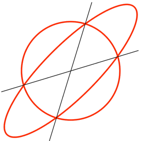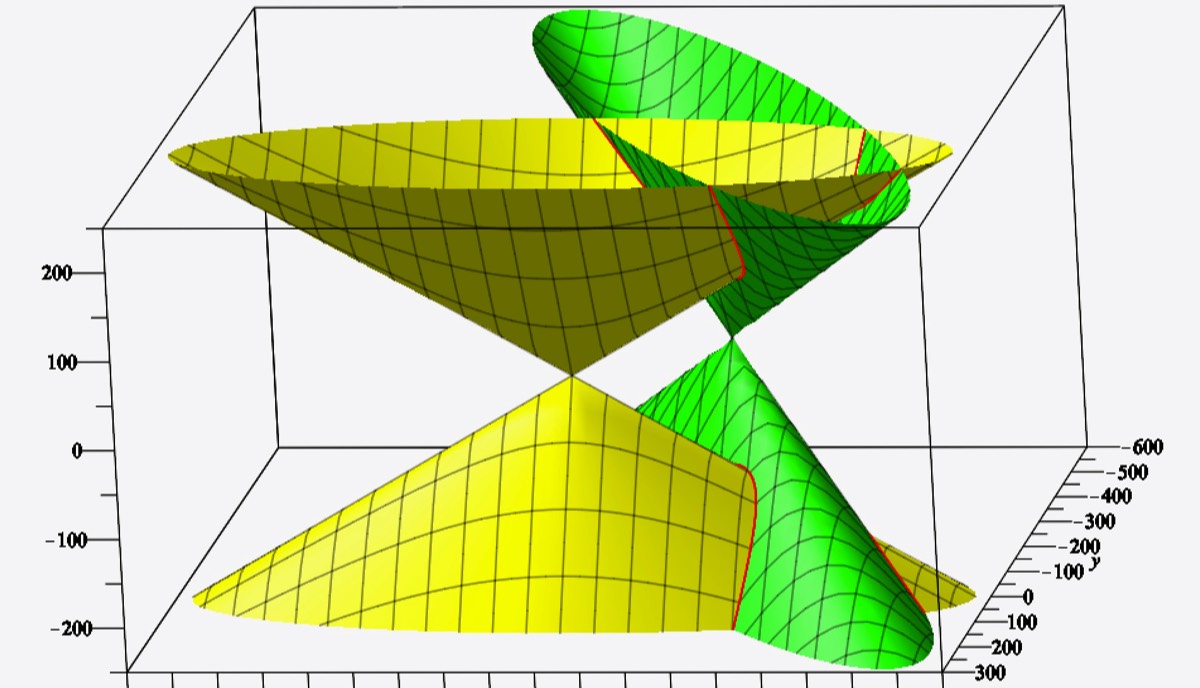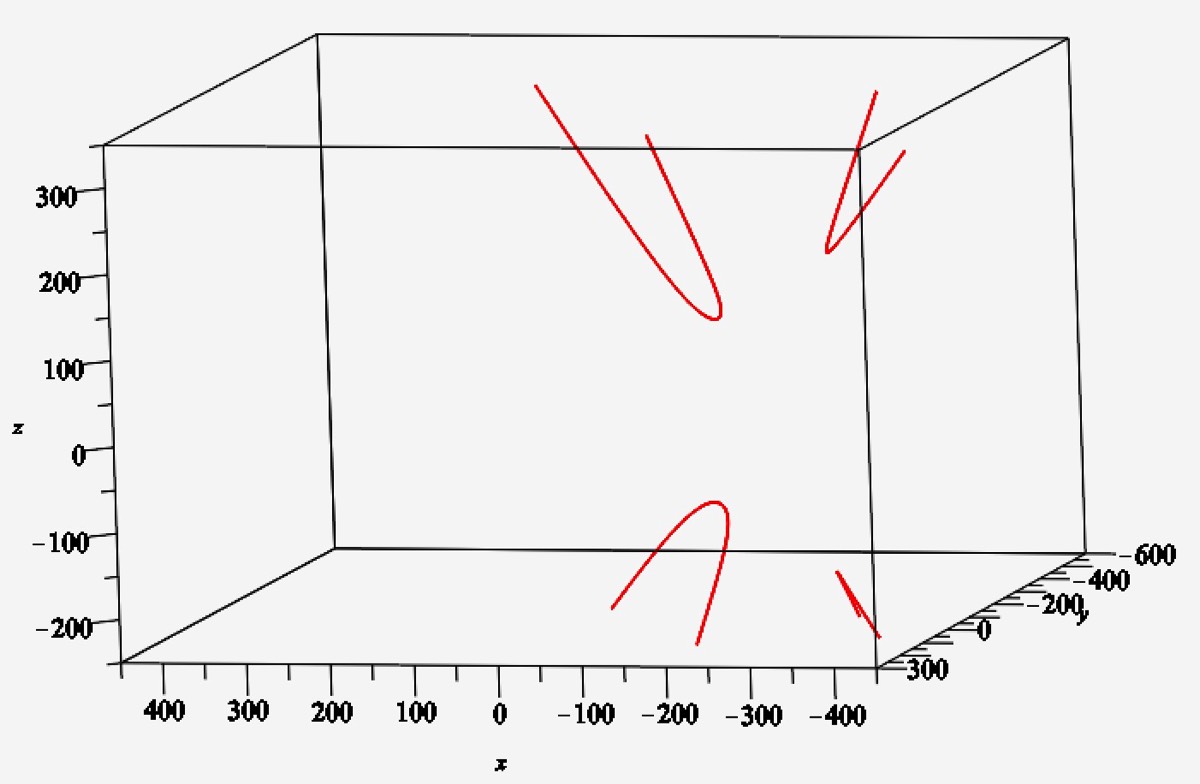The Conic Geometry of Rectangles Inscribed in Lines
Bruce Olberding and Elaine A. Walker (August 14, 2019)
This page contains supplementary graphics for our article, The Conic Geometry of Rectangles Inscribed in Lines.
The first series of examples illustrate the rectangle loci for different pairings of four lines A, B, C, D. The rectangle loci are found as in Lemma 4.3 by intersecting the HR-cones generated by the different pairings. For example, the first snapshot involves the intersection of the HR-cones generated by the pairs AB and CD. The snapshot is taken from above, looking directly down into the two HR-cones. (The two cones are only shown below a fixed height.) The four lines are superimposed on the cross-section in order that their relationship to the two cones is more apparent. By Lemma 4.3, the projection to the xy-plane of the intersection of the cones is the rectangle locus for the two pairs. In the first snapshot, this projection is a non-degenerate hyperbola.
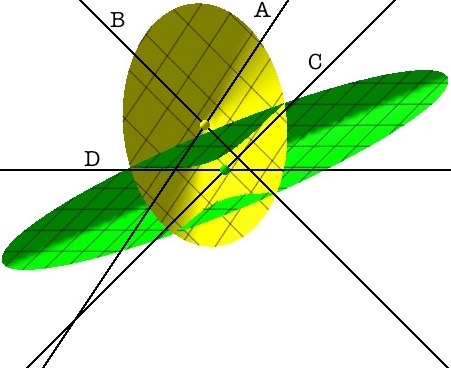
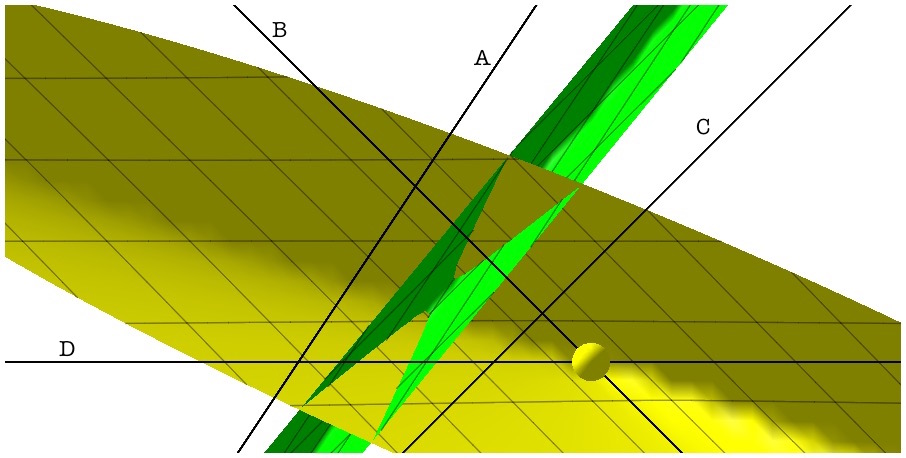
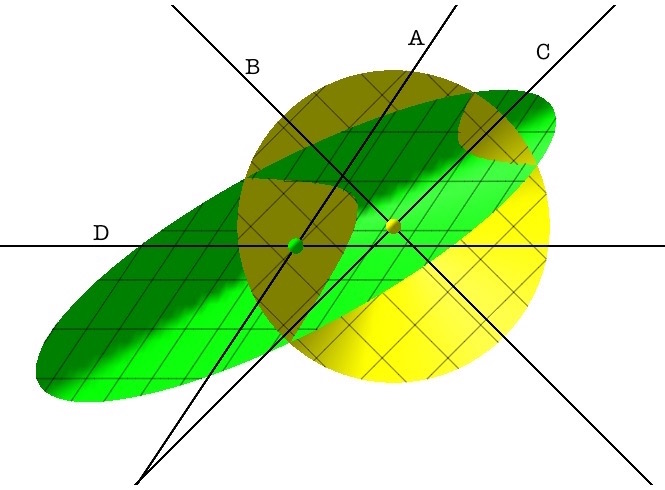
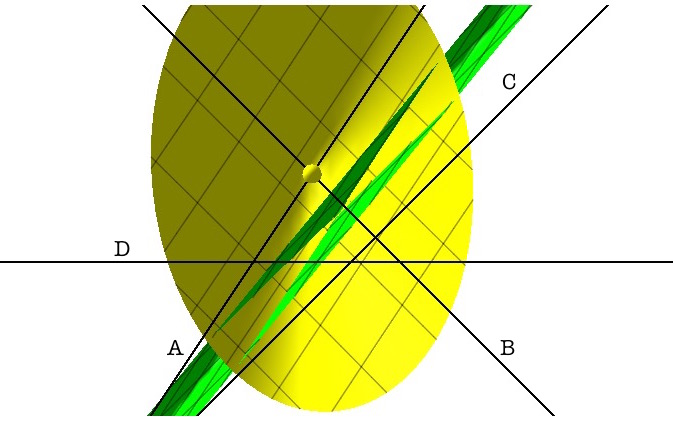
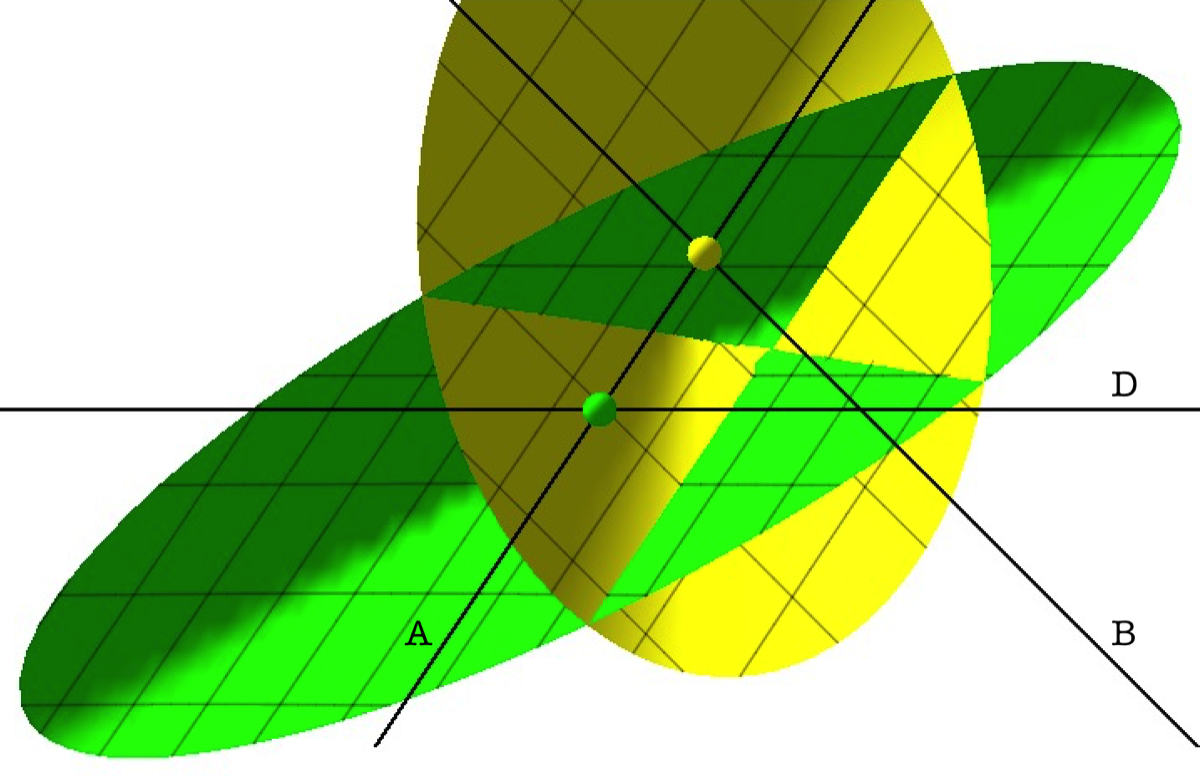
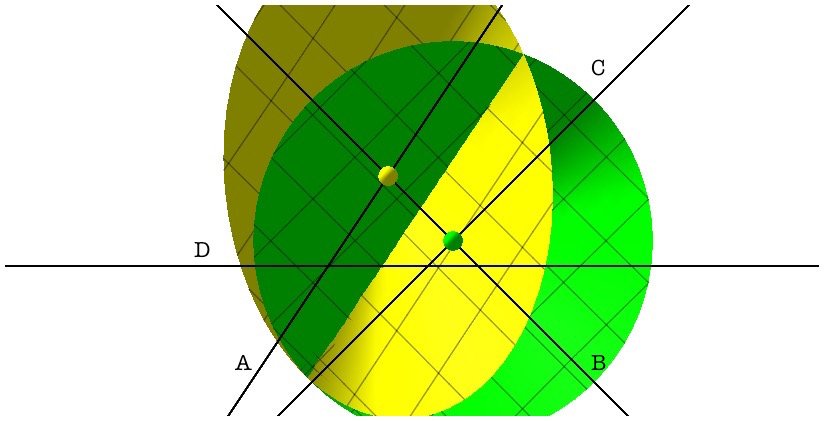
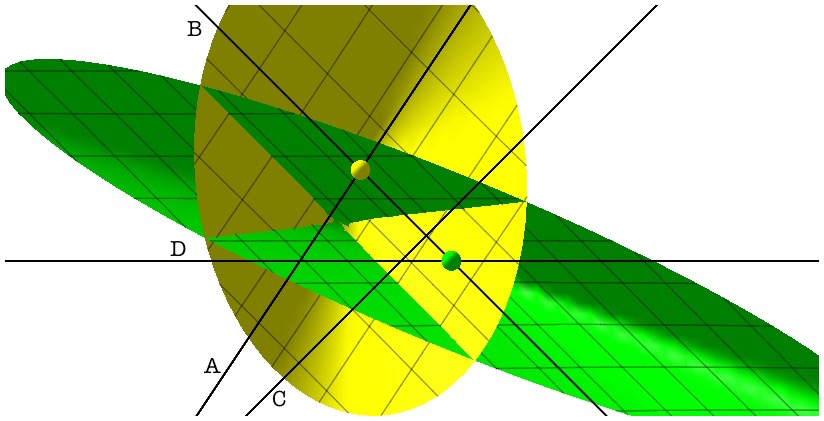
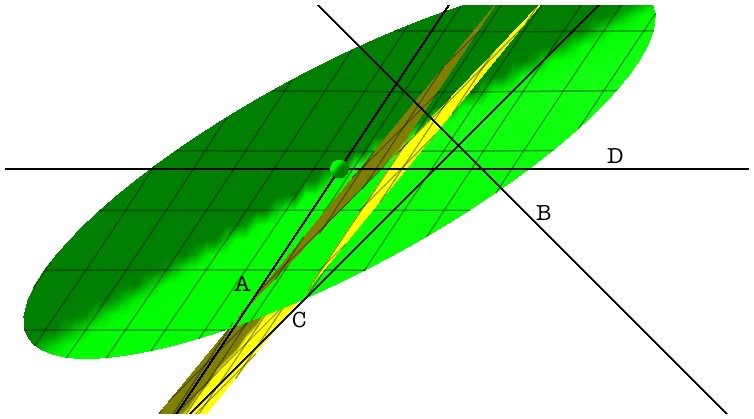
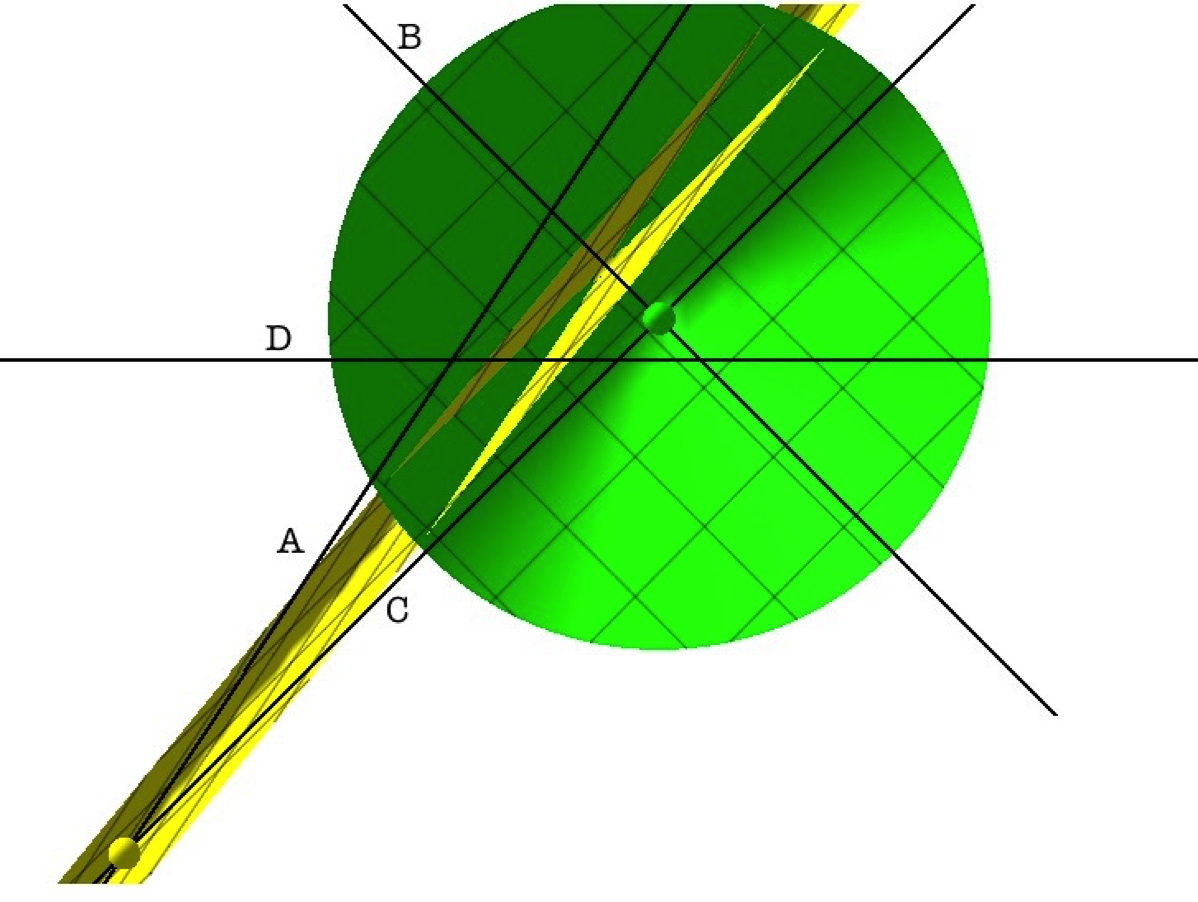
coming soon..
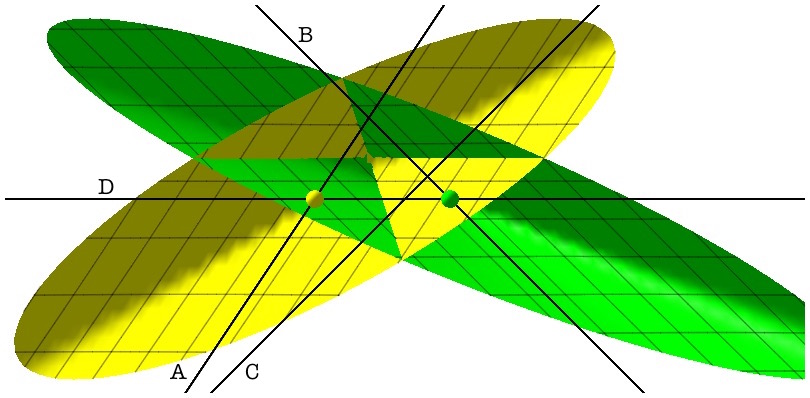
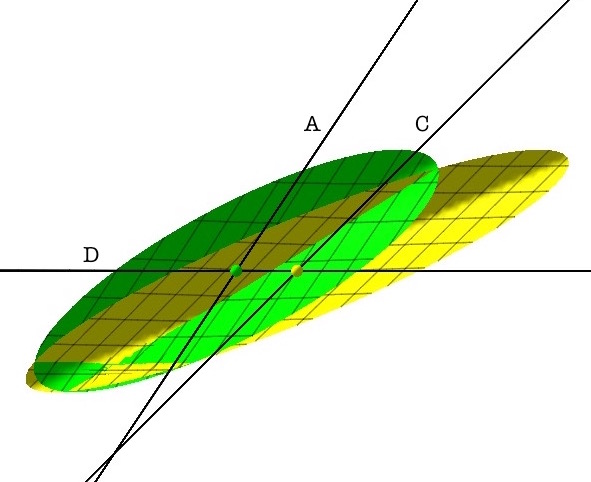
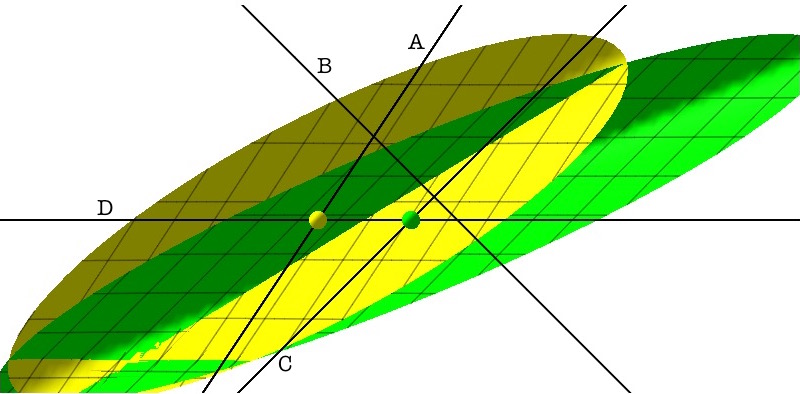
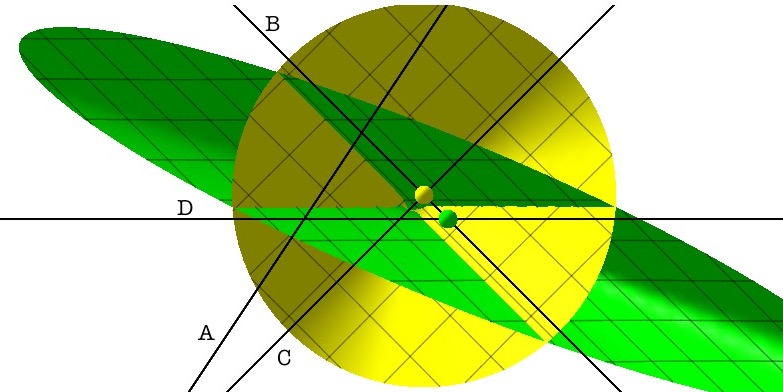
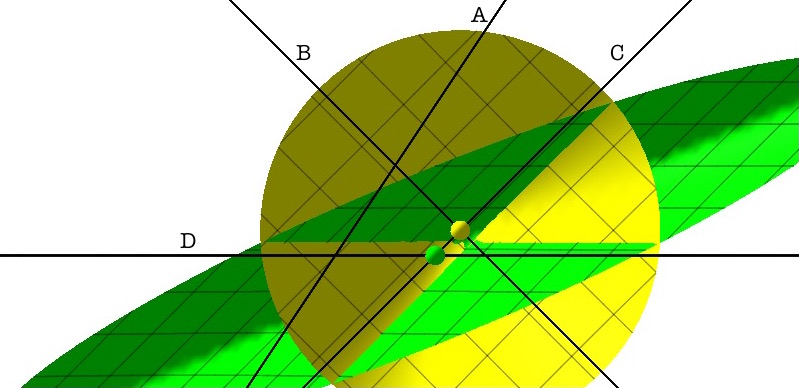
coming soon..
